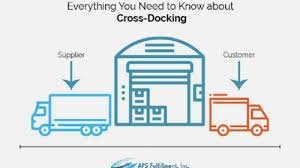Cross-docking is a logistics strategy that eliminates or minimizes storage time by directly transferring incoming goods to outbound shipments. When implemented effectively, cross-docking can reduce warehousing costs, improve supply chain efficiency, and shorten delivery times. However, managing cross-docking requires careful coordination, advanced technology, and strategic planning. Here are some key strategies for successfully managing cross-docking in your warehouse.
Optimize Warehouse Layout for Efficient Cross-Docking
Designate Cross-Docking Zones
Establish dedicated areas within your warehouse for incoming and outgoing shipments. Clearly marked zones minimize handling times and improve workflow efficiency by streamlining the movement of goods between receiving and shipping docks.
Implement a Logical Flow
Arrange receiving and shipping docks in close proximity to reduce transit times between unloading and loading. This layout ensures that products move seamlessly from suppliers to customers without unnecessary delays.
Utilize Advanced Technology for Streamlined Operations
Implement a Warehouse Management System (WMS)
A robust WMS provides real-time visibility into inventory movements, automates tracking, and optimizes scheduling. By integrating a WMS, warehouse managers can efficiently coordinate inbound and outbound shipments, reducing delays and improving order accuracy.
Leverage Automation and Data Analytics
Automation tools such as RFID scanners, barcode tracking, and AI-driven analytics enhance operational efficiency. These technologies help monitor product movement, identify bottlenecks, and predict demand, ensuring smoother cross-docking operations.
Improve Coordination with Suppliers and Carriers
Strengthen Supplier Relationships
Timely and accurate shipments from suppliers are crucial for cross-docking success. Establish clear communication channels and performance expectations with suppliers to minimize delays and ensure product availability.
Optimize Carrier Scheduling
Work closely with transportation providers to align delivery and pickup times. Advanced scheduling software can help synchronize inbound and outbound shipments, reducing wait times and maximizing dock efficiency.
Enhance Inventory Management Practices
Prioritize High-Demand and Perishable Goods
Cross-docking is most effective for products with fast turnover rates, such as perishable items, seasonal merchandise, and high-demand goods. Prioritizing these items ensures that they move quickly through the supply chain without unnecessary storage.
Utilize Cartonization for Efficient Handling
Cartonization helps optimize packaging by determining the best-sized cartons for shipments, reducing excess packaging, and improving loading efficiency. By incorporating cartonization into cross-docking operations, warehouses can minimize shipping costs and maximize space utilization.
Train Employees for Cross-Docking Efficiency
Provide Specialized Training
Employees should be trained in rapid sorting, inventory tracking, and efficient loading techniques. Proper training ensures that staff members handle products correctly and adhere to cross-docking protocols.
Encourage a Culture of Teamwork
Cross-docking requires seamless coordination between receiving, sorting, and shipping teams. Encouraging collaboration and open communication enhances efficiency and reduces errors.
Monitor and Improve Performance Continuously
Track Key Performance Indicators (KPIs)
Monitor metrics such as dwell time, order accuracy, and dock utilization rates to assess cross-docking efficiency. Analyzing these KPIs helps identify areas for improvement and optimize operations.
Implement Continuous Improvement Strategies
Regularly review cross-docking processes and adapt strategies based on data insights. Implementing lean management principles can further streamline operations and eliminate inefficiencies.
Final Thoughts
Successfully managing cross-docking in your warehouse requires a combination of strategic planning, technological integration, and effective coordination. By optimizing warehouse layouts, leveraging automation, improving supplier relationships, and incorporating cartonization, warehouse managers can enhance efficiency, reduce costs, and improve overall supply chain performance.
